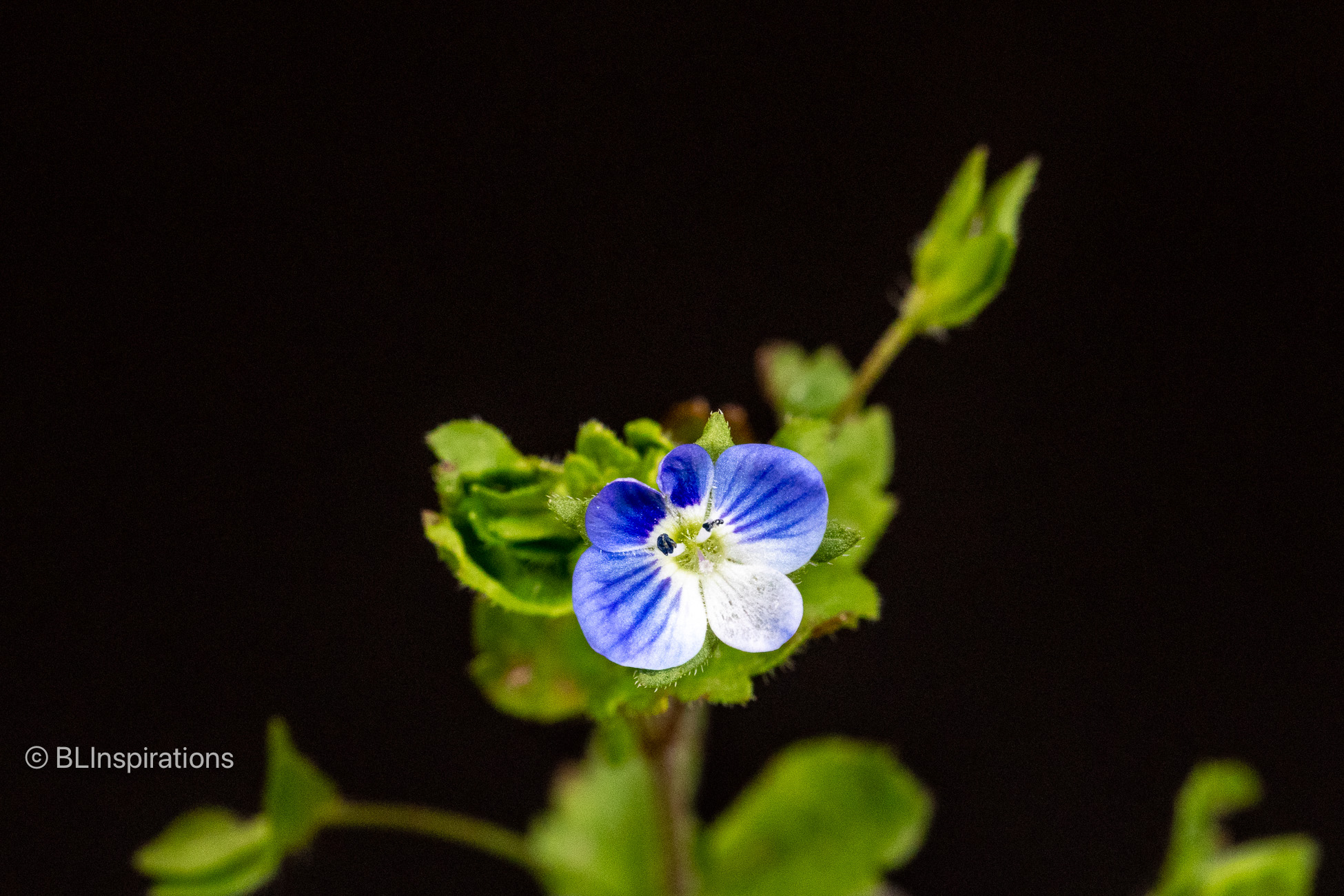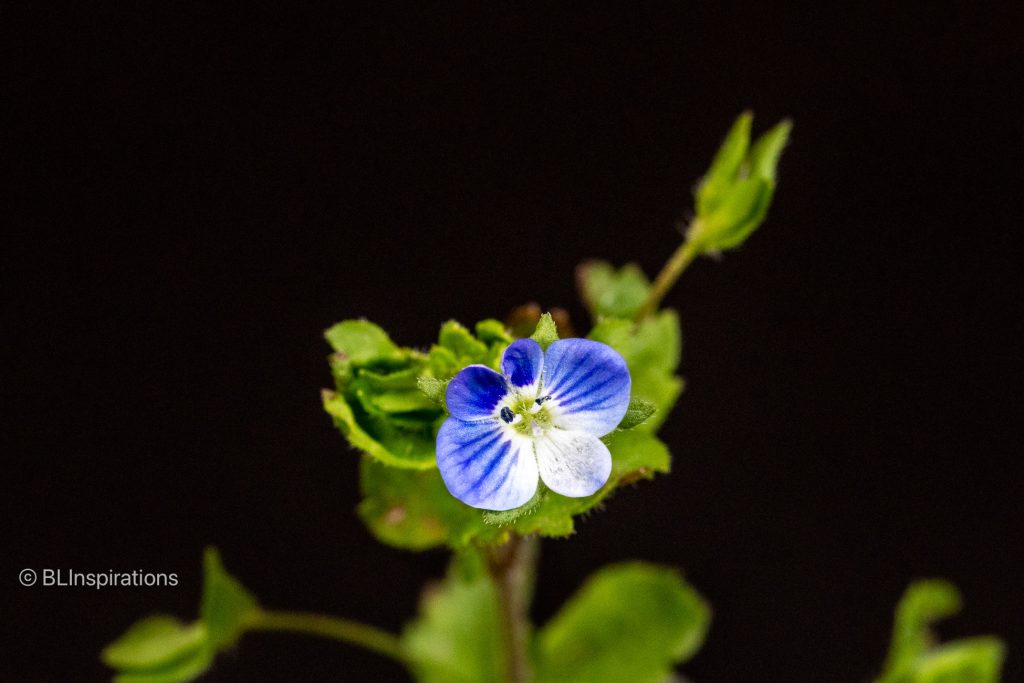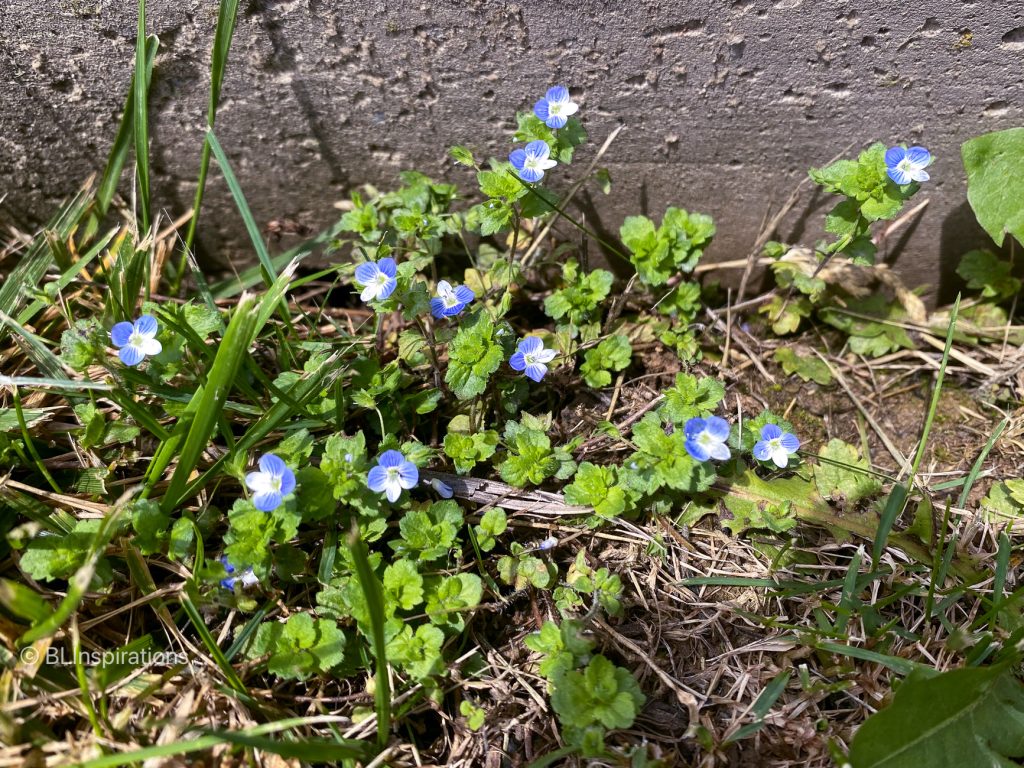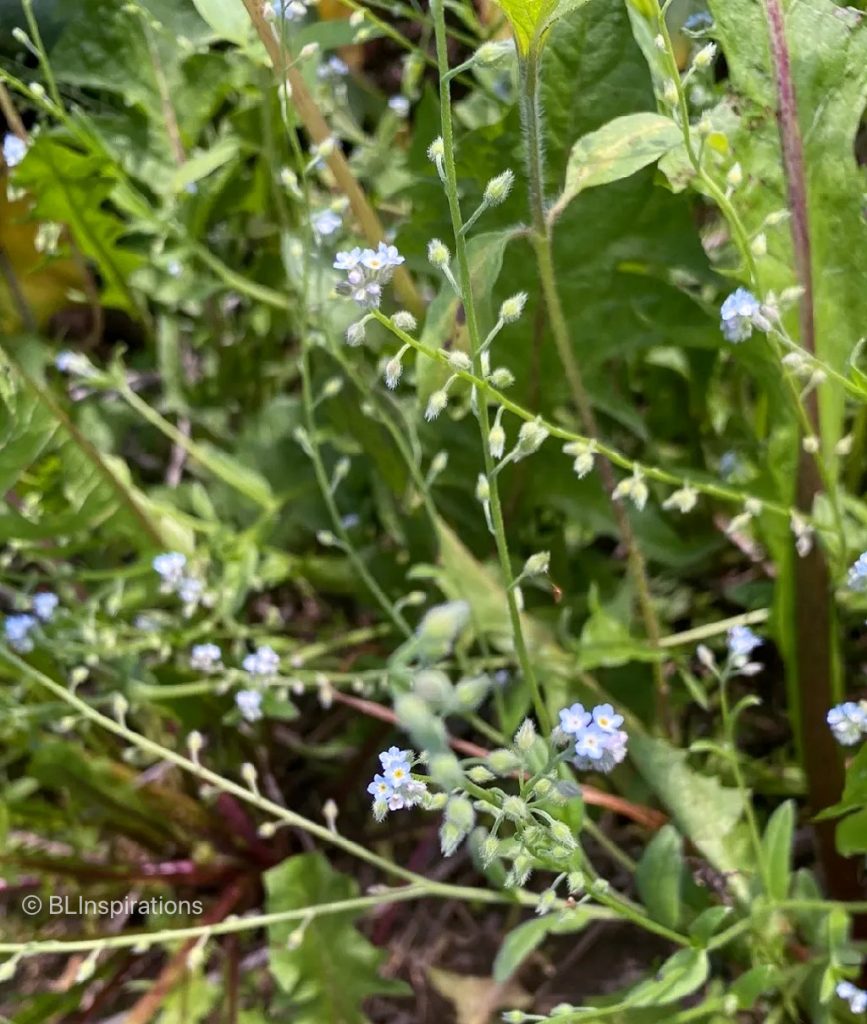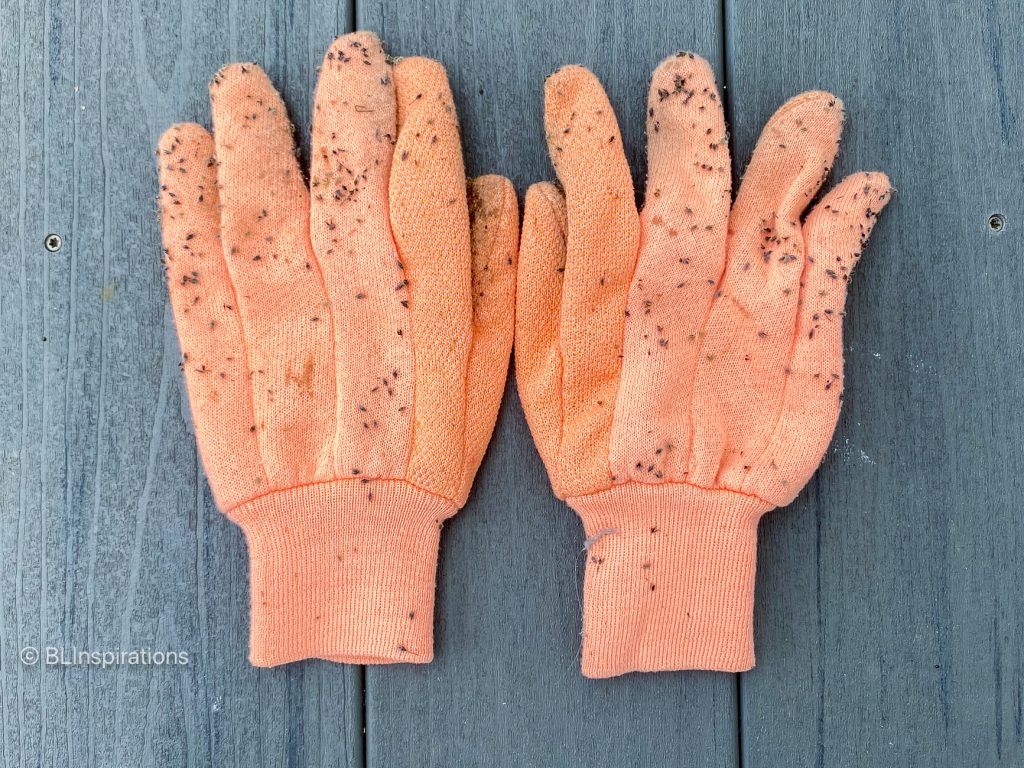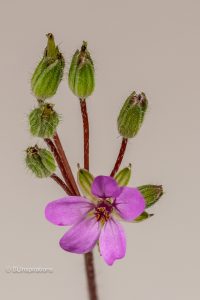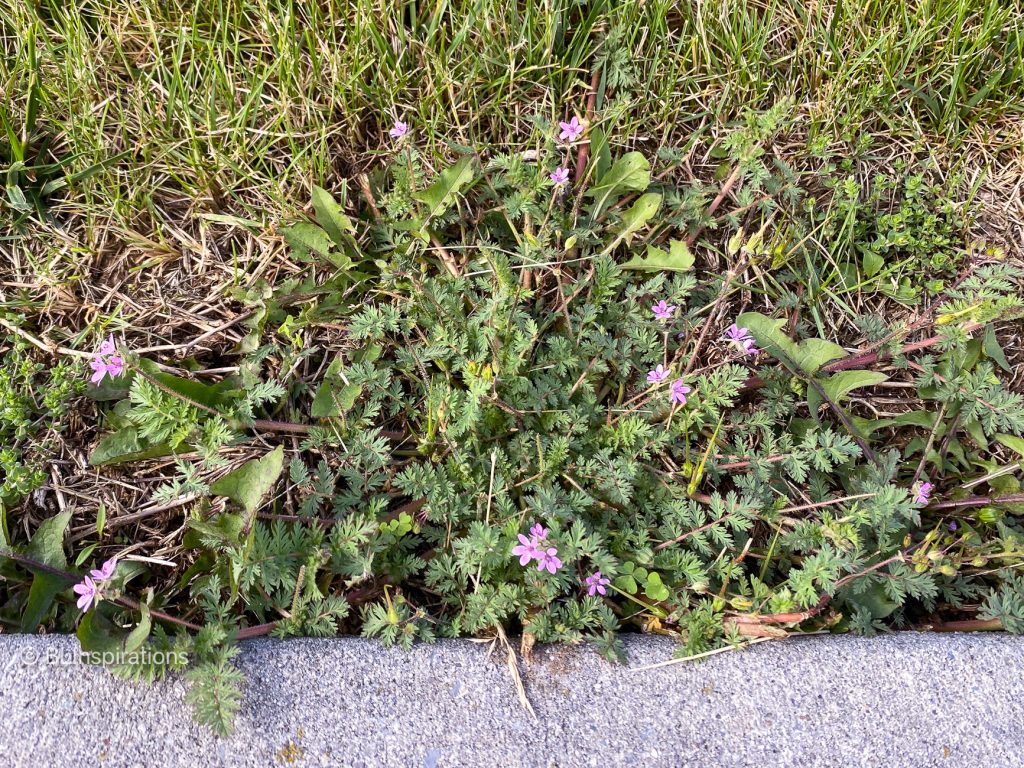Every spring we see tiny wildflowers in our lawn and in our garden beds. We also see them in parks, fields, meadows, and in other less-well maintained places. Most of these wildflowers are invasive weeds, but the photos below do show their intrinsic beauty. I have decided to photograph some of these flowers when an opportunity presents, and will periodically add new ones to this post along with a brief description, to increase awareness of their beauty.
We have noticed that the petals of some of these tiny flowers close during bright sunlight. This seems to be part of the plant preventing water loss.
Featured Image Note: Since there are multiple plants described in this post and new ones will be added occasionally, the information about the featured flower will always be at the top of the page and the previous featured plant will be moved down.
Bird’s-eye Speedwell
Bird’s-eye Speedwell (Veronica persica) is a small annual plant native to Eurasia and introduced in North America that reproduces only from seed. We see the flowers in the lawn and along lawn edges in the spring and some new flowers are visible before the lawn is mowed again. Individual flowers are symmetrical and are about 1/4″ to 3/8″ across. These flowers were very difficult to photograph as they are very delicate and the petals were frequently damaged by handling the stems of the plant.
Click the images below to see larger images.
References:
bplant.org: Bird’s-eye Speedwell (Veronica persica)
Wikipedia: Veronica persica
Field Forget Me Not
The field forget-me-not (Myosotis arvensis) is native to Europe and Asia, and widely introduced through northern and eastern North America. It can aggressively spread around buildings and unused garden spaces and is considered invasive in many areas. It is common in unkempt areas of our garden and when the ground is wet, we pull it out and destroy it to avoid spreading seeds. The photo of garden gloves below shows many Forget Me Not seeds tightly adhered to them after pulling some dry plants. That is another way the plants can easily spread and thus become more invasive.
The five-lobed flowers are typically blue and are about ⅛” across.
Click the images below to see larger images.
References:
Minnesota Wildflowers: Myosotis arvensis (Field Forget-me-not)
Wikipedia: Myosotis arvensis
Red Stem Stork’s Bill
The Red Stem Stork’s Bill (Erodium cicutarium), so-named because the seed pods resemble a long beak, is an annual or biennial, native to the Mediterranean area. It was introduced into California in the 18th century and thrives in the dryer climates of the arid west. It has spread throughout most of the US and is considered invasive in some western states.
When left alone, the stems will grow to about 20″ but if flowering stems are removed, such as by grazing or mowing, the plant will produce new stems low to the ground, which makes the plant more adaptable to various locations.
Seeds become ‘spring-loaded’ as they dry, which helps disperse the seeds by launching them from the plant. In addition, a spiral-shaped ‘awn’ (a long bristle-shaped seed with a tail – see the Laidback Gardner reference below) expands and contracts in response to changes in humidity, which helps pull the seeds deeper into the soil.
We find these plants in our lawn growing close to the ground along sidewalks but also growing upright in untended areas of our garden. The flowers are about ⅜” across.
We have noticed that in the late fall some of the leaves turn a brilliant red-orange after a freeze, but some of the plants are still blooming. There is a photo of some of these colored leaves below; the opposing leaves are about ⅝” tip-tip.
Click the images below to see larger images.
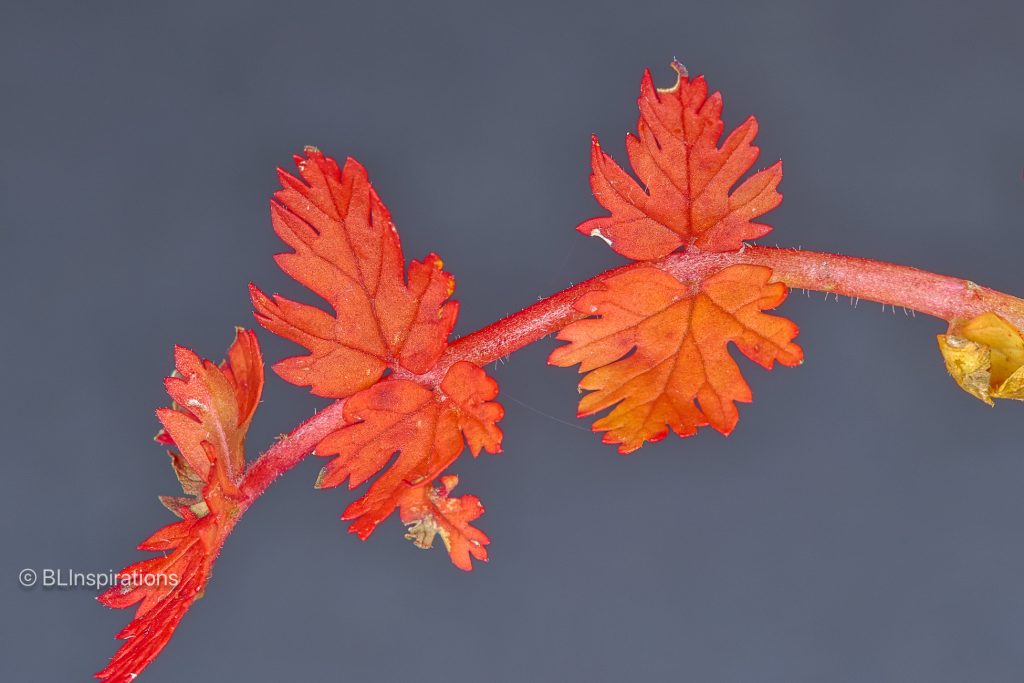
References:
Wikipedia: Erodium_cicutarium
bplant.org: Red Stem Stork’s Bill
Laidback Gardner: Seed: Sow Thyself!
